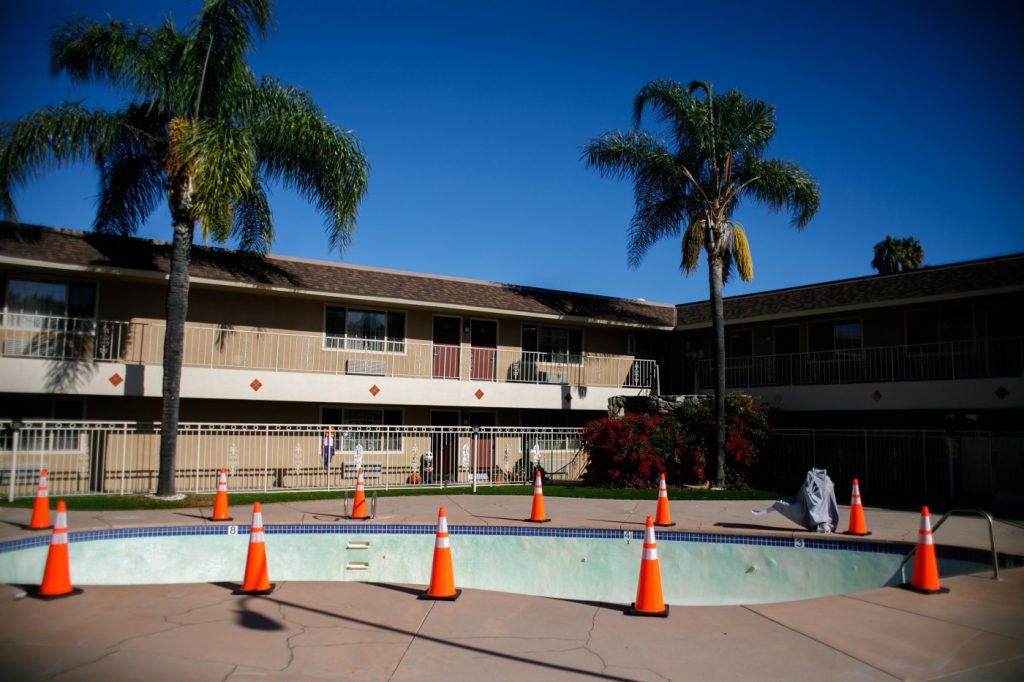SANTA CRUZ — A recently released assessment of Project Roomkey, the pandemic-era emergency homeless motel housing, highlighted Santa Cruz County as one of five community case studies.
The two-year statewide assessment of Project Roomkey’s outcomes was commissioned jointly by the nonprofit philanthropy organization California Health Care Foundation and the family philanthropic trust of Conrad N. Hilton Foundation, via Abt Associates and was released May 6.
The assessment comes little more than a month after Santa Cruz County’s Housing for Health Division released its second three-year strategic homeless framework as part of a late-March study session with the Santa Cruz County Board of Supervisors.
According to the “Project Roomkey Evaluation Final Report,” the state-funded Project Roomkey was created in response to the coronavirus outbreak and initially was designed to move medically vulnerable individuals with complex needs off the streets and into their own rooms, with meals and laundry service.
The program offered an alternative to traditional “congregate” shelters, which typically grouped individuals in the same rooms, dorm-style. Before its conclusion, the program’s mission expanded to move sheltered individuals into more permanent housing.
During its operations, Santa Cruz County set up six Project Roomkey shelters at local motels — four in Santa Cruz and two in Watsonville — and 257 rooms with the help of three rounds of state program funds, according to the report. Initially, county employees were repurposed as “Disaster Service Workers” to staff the sites, roles later filled out with new community hires. Some 1,385 individuals were housed during the program’s more than two-year run, according to the report. The outcomes of another 44 individuals were unaccounted for in the report.
Of the Roomkey participants, about 27% exited to permanent housing and nearly 6% to temporary housing, according to the report. About 25% entered congregate shelters and 15% to an unsheltered location. More than 5% went into short- or long-term institutional settings and 18% departed to unknown or “other” locations.
“PRK (Project Roomkey) staff reported closing sites before all participants had been connected to housing was difficult, knowing that some participants would return to homelessness,” the report noted.
The report highlighted some of the county’s struggles in meeting program participants’ behavioral health needs and those with acute health conditions called for a higher level of care that neither the available public health nurses nor hotel staff were able to regularly provide.
Those interviewed for the case study, however, generally gave high ratings to the accommodations, basic services and staffing, according to the report.
“When reflecting on their time in the program, most participants reported feeling positively about the experience,” the study. noted. “Many appreciated the privacy and safety in comparison to a more traditional shelter.”
Now that the most significant day-to-day effects of the pandemic have begun to fade — Santa Cruz County shuttered its last Project Roomkey-funded motel room around June 2022 — jurisdictions and their local partners continue to look toward future homelessness response strategies.
Related Articles
Paid sick leave sticks after many pandemic protections vanish
Mistrust, fights and blood sport: How COVID-19 trauma is shaping the 2024 election
US Supreme Court denies California’s appeal for immunity for COVID-19 deaths at San Quentin prison
California actor found guilty of soliciting investments for phony COVID-19 cure
Redwood City approves Broadway permanent pedestrian mall
Santa Cruz County’s new three-year framework, retroactive to January, aims to: lower the average time spent homeless by 10% each year; reduce the number of people returning to homelessness each year by 20%; ensure community partners are collecting outcome and community needs data; and increase outreach and access to services countywide.
The initial three-year framework, in effect from January 2021 to January 2024, called for a 25% reduction in households experiencing homelessness and a 50% drop in households living outside and in their vehicles.
During that period, Santa Cruz County supported the successful applications for three state-funded Project Homekey applications, saw a single-year homeless count reduction of 21.5%, the lowest annual point-in-time count tally since its local inception in 2007, and counted 911 people who moved from homelessness to permanent housing between July 2022 and June 2023. Last year, the Housing for Health Partnership also launched a redesigned Coordinated Entry System, tracking relevant data regarding county homelessness, and considered a factor — along with increased Housing Authority vouchers — in the number of housing placements.


